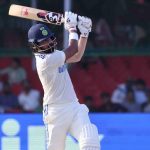
Jasprit Bumrah injury warning: Shane Bond cautions India
Jasprit Bumrah, India’s premier fast bowler, is in the midst of a careful recovery from a serious back injury. The 31-year-old pacer has not bowled in a competitive match since early January, when he suffered back spasms during the final Test of the Border-Gavaskar Trophy in Australia. Those spasms were later revealed to be a stress-related injury, forcing Bumrah to miss the ICC Champions Trophy 2025 – a tournament India went on to win unbeaten, even without their strike bowler. Bumrah is currently undergoing rehabilitation at the National Cricket Academy, and while he is expected to return to action with the Mumbai Indians in IPL 2025, the team has not set a firm date for his comeback.
Bumrah’s injury history has been a growing concern for Team India. He previously underwent back surgery in 2023, an ordeal that sidelined him for almost a year. Although he made a strong comeback, his unique bowling action and the heavy workloads he shoulders mean that he remains susceptible to breakdowns if not managed properly. During the recent tour of Australia, Bumrah played all five Tests without a break due to a depleted bowling attack, and India seemingly pushed him to his limit. In the Melbourne Test, he bowled a marathon 53.2 overs – the most he has ever delivered in a single Test match – underscoring how heavily the team relied on him. By the end of that series, Bumrah was left exhausted and on the brink of another major injury, highlighting the urgent need for better workload management.
Shane Bond warning on Bumrah’s workload
Shane Bond, a former New Zealand fast bowler and current IPL coach, has issued a strong warning to the Indian team management regarding Bumrah’s fitness. Bond, whose own playing career was cut short by back injuries, is intimately familiar with the dangers of overworking a pace bowler. Having worked closely with Bumrah as the bowling coach of Mumbai Indians, Bond has a unique insight into the pacer’s capabilities and limits. He cautioned that India must not repeat past mistakes in handling Bumrah, bluntly stating that the star bowler is “on the borderline of a fracture” after the workload he endured in Australia.
Bond stressed a few key points in his warning about Bumrah:
-
Limit consecutive Tests: Bumrah should not be made to play all five Tests in the upcoming England series. Bond recommended that the ace pacer appear in no more than two consecutive Test matches to prevent extreme fatigue and stress on his healing back.
-
Beware post-IPL fatigue: Transitioning straight from the high-intensity IPL season into a lengthy Test series can be risky. Bond highlighted that coming out of the IPL and immediately playing Test cricket is a dangerous period for Bumrah’s body, and extra caution is required during this time.
-
Avoid career-threatening injury: The 2023 back surgery fixed one issue, but another injury in the same spot could be potentially career-ending for Bumrah. Bond warned that one more serious back injury in that previously repaired area might be impossible to remediate with surgery again, effectively putting the bowler’s career in jeopardy.
Expanding on these points, Bond emphasized that Bumrah is simply too valuable to risk in every single game. “He’s your best bowler, but if he has another injury in the same spot, that could be a career-ender,” Bond noted, urging India to think long-term. He advised the team to have honest conversations with Bumrah about his workload and to resist the temptation to over-bowl him even if the player himself is eager to play every match. According to Bond, no player is immune to injuries, but smart management can help avoid the most severe setbacks. His advice to India is clear: spread out Bumrah’s workload, even if it means resting him when he’s seemingly in top form, in order to ensure he can continue to lead the attack in the years to come.
India cricket fitness management and future plans
Bond’s warning has put the spotlight on India’s cricket fitness regimen and workload management strategies, especially for fast bowlers. Team India’s leadership — including interim head coach Gautam Gambhir and captain Rohit Sharma — have been cautioned to learn from the mistakes of the Australia tour, where an over-reliance on Bumrah nearly led to disaster. In that series, injuries to other pacers (with Mohammed Shami not fully fit and others like Prasidh Krishna just returning from layoffs) left India’s bowling resources thin. The management turned Bumrah into a one-man army, a gamble that delivered short-term results but almost cost them their spearhead to a serious injury. Bond’s message to the think-tank is that such a scenario should not be allowed to repeat.
With a grueling five-Test series in England on the horizon (a tour that will stretch the team’s fast-bowling reserves), India is expected to adopt a rotation policy to keep Bumrah healthy. This means relying on a broader squad of fast bowlers — including Shami, Mohammed Siraj, and others — to share the burden so that Bumrah can be preserved for crucial moments. The idea is to have Bumrah at full strength for key matches rather than running him into the ground early in the series. Indian selectors and physios are likely to monitor his workload closely, perhaps capping the number of overs he bowls in each match (Bond suggested around 45 overs per Test as a safe upper limit) and ensuring he gets adequate rest between games.
Maintaining peak fitness for players like Bumrah is now a top priority for India’s cricket management. The team has a packed calendar ahead, and losing their premier fast bowler to injury would be a massive blow in upcoming ICC events and important series. By heeding Shane Bond’s warning and implementing a smart workload management plan, India aims to extend Jasprit Bumrah’s career and keep him firing on all cylinders across formats. The coming months — with Bumrah’s anticipated return in the IPL and the subsequent England Tests — will be a litmus test of this approach. Fans and experts alike will be watching closely to see if India can balance immediate match-winning needs with the long-term health of their most prized pacer.

















